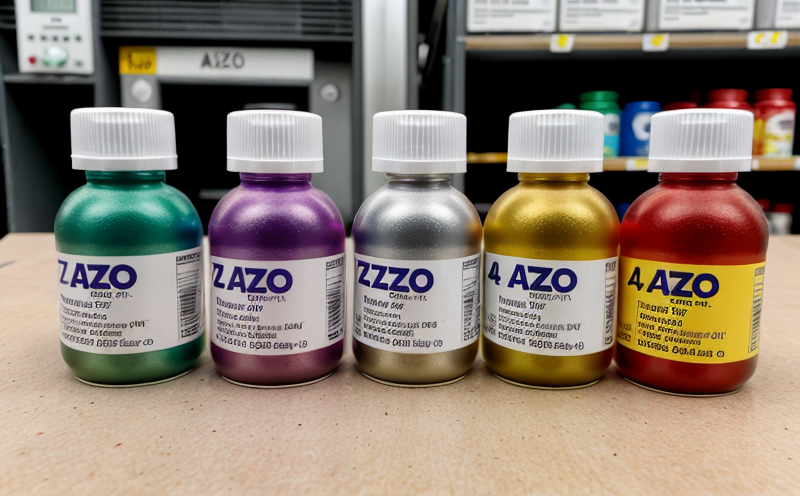Cadmium content analysis in children’s clothing fabrics
Ensuring the safety and quality of textiles is a paramount concern, especially when it comes to products intended for children. Cadmium, a heavy metal known for its toxicity, can pose significant health risks if present in high concentrations in materials used in children's clothing. This service focuses on the precise measurement of cadmium content within fabrics commonly found in garments worn by infants and young children.
The importance of this analysis cannot be overstated. Cadmium accumulates in living organisms over time, posing a greater risk to developing bodies. Ingestion or inhalation of cadmium-contaminated fibers can lead to severe health issues, including kidney damage, bone disease, and even cancer. Therefore, the detection and quantification of cadmium levels are essential steps towards maintaining high standards of safety in the textile industry.
The process involves rigorous sample preparation where fabric swatches are cut from garments. These samples undergo acid digestion followed by atomic absorption spectrophotometry (AAS) or inductively coupled plasma mass spectrometry (ICP-MS), methods widely recognized for their accuracy and precision. The results provide a quantitative measure of cadmium content per gram of fabric, ensuring compliance with international safety standards.
Compliance is critical not only to protect children’s health but also to adhere to legal requirements set forth by various regulatory bodies worldwide. This service helps textile manufacturers, suppliers, and retailers ensure their products meet these stringent guidelines. For instance, the European Union's Restriction of Hazardous Substances (RoHS) directive and the REACH regulations specifically address the limits on cadmium content in consumer goods.
The precision of this analysis is further enhanced by leveraging advanced laboratory equipment such as state-of-the-art AAS or ICP-MS instruments. These tools ensure accurate detection down to trace levels, providing reliable data that can be used for quality control and process improvement.
By offering this service, we aim to support the textile industry in maintaining its commitment to producing safe products. Our experienced team of analysts ensures that every test is conducted with meticulous attention to detail, delivering results that are not only accurate but also actionable. This allows clients to make informed decisions regarding their product development and quality assurance processes.
It is crucial for manufacturers to stay updated on the latest standards and regulations related to cadmium content in textiles. Regular testing helps identify any potential issues early on, preventing costly recalls or legal disputes down the line. Our service also includes a detailed report that outlines findings and recommendations based on the analysis conducted.
Why It Matters
The presence of cadmium in children’s clothing fabrics can have severe implications for public health and safety. Cadmium is classified as a toxic element, meaning it poses significant risks even at low levels when ingested or absorbed through the skin. Children are particularly vulnerable due to their smaller size and higher rates of metabolic activity compared to adults.
Exposure to cadmium can lead to various adverse effects including kidney damage, bone disease, and even cancer. These health concerns underscore the necessity for stringent quality control measures in the textile industry. By ensuring that cadmium levels are kept well below safety thresholds, manufacturers play a crucial role in safeguarding children's well-being.
- Regulatory compliance is mandatory to avoid legal sanctions and maintain market access.
- Avoidance of recalls which can damage brand reputation and lead to financial losses.
- Enhancement of customer trust by demonstrating commitment to product safety.
The importance of this analysis extends beyond mere regulatory adherence. It reflects a broader responsibility towards ethical business practices and sustainable manufacturing processes. By prioritizing the health and safety of children, textile companies contribute positively to societal well-being.
Industry Applications
| Application | Description |
|---|---|
| Detection in Garments | Testing for cadmium content within children's clothing to ensure compliance with safety standards. |
| Quality Control | Monitoring production processes to maintain consistent cadmium levels below regulatory limits. |
| R&D for New Products | Evaluating new textile materials and finishes for their cadmium content before market release. |
| Supply Chain Management | Verifying supplier compliance by conducting random checks on incoming fabric batches. |
The application of this service is not limited to just one aspect but encompasses a broader spectrum of activities within the textile industry. From initial design stages to final product release, cadmium content analysis plays a vital role in ensuring product safety and regulatory compliance.
By integrating this testing into their operations, manufacturers can proactively address potential issues before they escalate into larger problems. This proactive approach not only enhances product quality but also fosters long-term relationships with customers and stakeholders who value ethical business practices.
International Acceptance and Recognition
- ISO 10373: General requirements for the sampling of textile products.
- ASTM D7840-19: Standard test method for cadmium in textiles by inductively coupled plasma mass spectrometry (ICP-MS).
- EU RoHS Directive: Restriction of the use of certain hazardous substances in electrical and electronic equipment.
- REACH Regulation (EC) No 1907/2006: Registration, evaluation, authorization, and restriction of chemicals.
The international community has established several standards and regulations that govern the analysis of cadmium content in textiles. These include ISO standards for sampling procedures, ASTM methods for precise measurement using ICP-MS, as well as EU directives like RoHS and REACH which specifically address cadmium thresholds in consumer goods.
Compliance with these international standards is essential not only to avoid penalties but also to ensure a consistent global market. The acceptance of our analytical results by reputable organizations around the world further solidifies the reliability and accuracy of this service.





